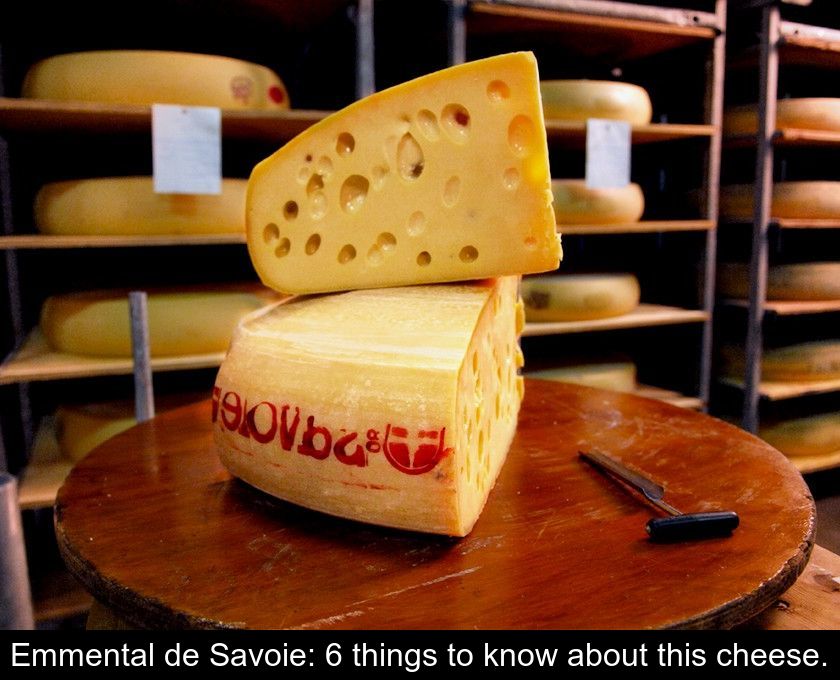Emmental De Savoie: 6 Things To Know About This Cheese.
Although Emmental cheese originates from Switzerland, France can also take pride in perpetuating the traditional production of this raw milk pressed cooked cheese in Savoie and Haute-Savoie. Here are 6 things you probably don't know about Emmental de Savoie.
1- It is the oldest of the French Emmentals.
As its Helvetic name suggests, Emmental was introduced in France under the influence of Switzerland between the 16th and 18th centuries. The production of Savoie Emmental cheese is attested on our territory since the beginning of the 19th century. The making of this cheese allows for the use and conservation of surplus milk produced by cows in the spring.
Initially grouped into associations, producers decided to entrust the production of this cheese to a cheese specialist called "fruitier". It is known that there was already a fruitière in Viry in Haute-Savoie in 1822. During the 19th century, cheese-making activity developed and there were more than 500 fruitières in the two Savoies.
This cheese has been protected by a PDO since 1996.
Today, this fruit-growing tradition is still alive in Savoie and Haute-Savoie. The origin, the necessary know-how for its production, and the final quality of this cheese are protected by a Protected Geographical Indication.
The Emmental de Savoie has had a PGI since 1996. This European label is accompanied by strict specifications that guarantee the geographical origin of this cheese and impose production rules.
In 2022, the Savoie cheese industry also submitted an application to the INAO to obtain recognition as a PDO or Protected Designation of Origin.
3- Its manufacture requires very precise know-how.
The production of this cheese requires demanding expertise that is passed down from generation to generation. Today, there are few cheesemakers who master this process and only three dairies continue the production of the authentic Emmental de Savoie while respecting tradition. In fact, no less than 10 manufacturing steps are necessary, from milk collection to ripening and quality evaluation, to obtain this cheese with a melting texture and fruity taste.
4- He is the biggest French cheese.
In addition to its delicious taste, Savoie Emmental holds the title of largest French cheese. A wheel of Emmental, recognized by its more or less rounded shape without a hollow or cap, weighs an average of 75 kg.
These large wheels are aged in maturing cellars for 75 to 100 days (compared to only 56 days for French Emmental).
It takes 850 liters of raw milk to make one wheel. The milk from 3 local breeds of cows is used: that of Abondance, Montbéliarde and Tarentaise cows. These cows enjoy a minimum of 150 days of grazing per year and are also fed with local forage and cereals guaranteed to be GMO-free.
The geographical production area extends over the foothill areas of Savoie and Haute-Savoie and spills over into the neighboring departments of Ain and Isère. It includes no less than 500 collection municipalities.
5- Its holes are due to its particular refining technique.
If you've ever wondered why Emmental cheese has holes, know that this particularity is linked to the ripening process.
To obtain an authentic Emmental de Savoie, it is necessary to proceed with a ripening in three stages:
• first a stay in a cold cellar or pre-ripening for at least one week, at a maximum temperature of 14°C and a minimum humidity of 80%
• a passage in a temperate cellar between 14°C and 18°C, with a relative humidity between 70% and 95%.
• a ripening in a warm cellar at 23°C, for at least 21 days.
It is this particular ripening process that gives Emmental its characteristic holes and bulging shape. During this process, a fermentation called propionic fermentation releases gas. This gas, trapped in the cheese paste, forms bubbles and creates the famous holes or "eyes" of Emmental!
6- It is the least salty of Emmentals.
Thanks to the specificities of its terroir and aging process, Savoie IGP Emmental has the lowest salt content of all Emmentals: 0.3 g of salt per 100 g of cheese.
This hard cheese is also an excellent source of calcium as it contains 8 times more than milk. It provides 1000 mg of calcium per 100 g.
Even more surprising, 100 g of this cheese provides as much protein as 4 eggs: another good reason to include this delicious regional cheese in your menus and recipes!






